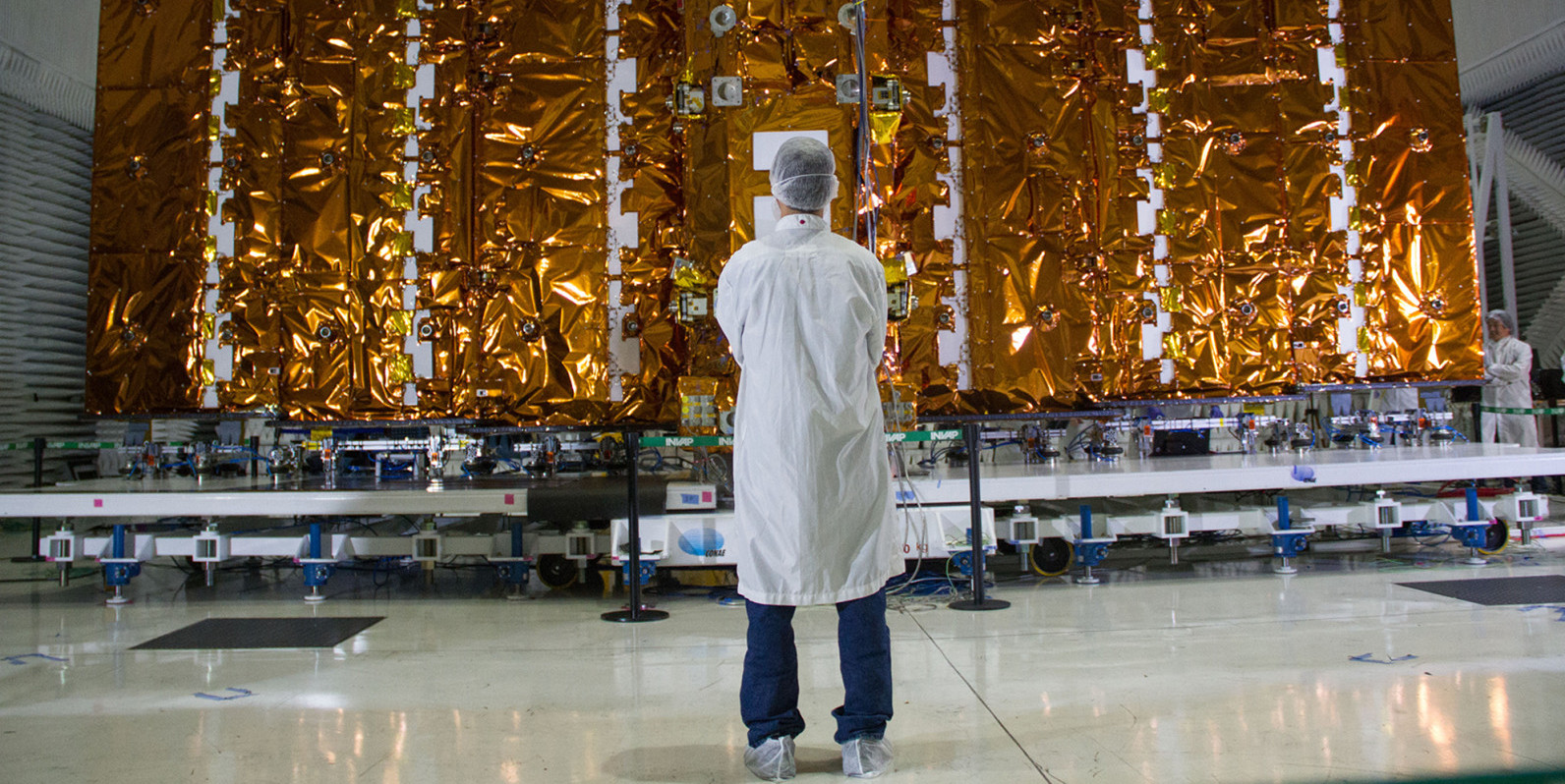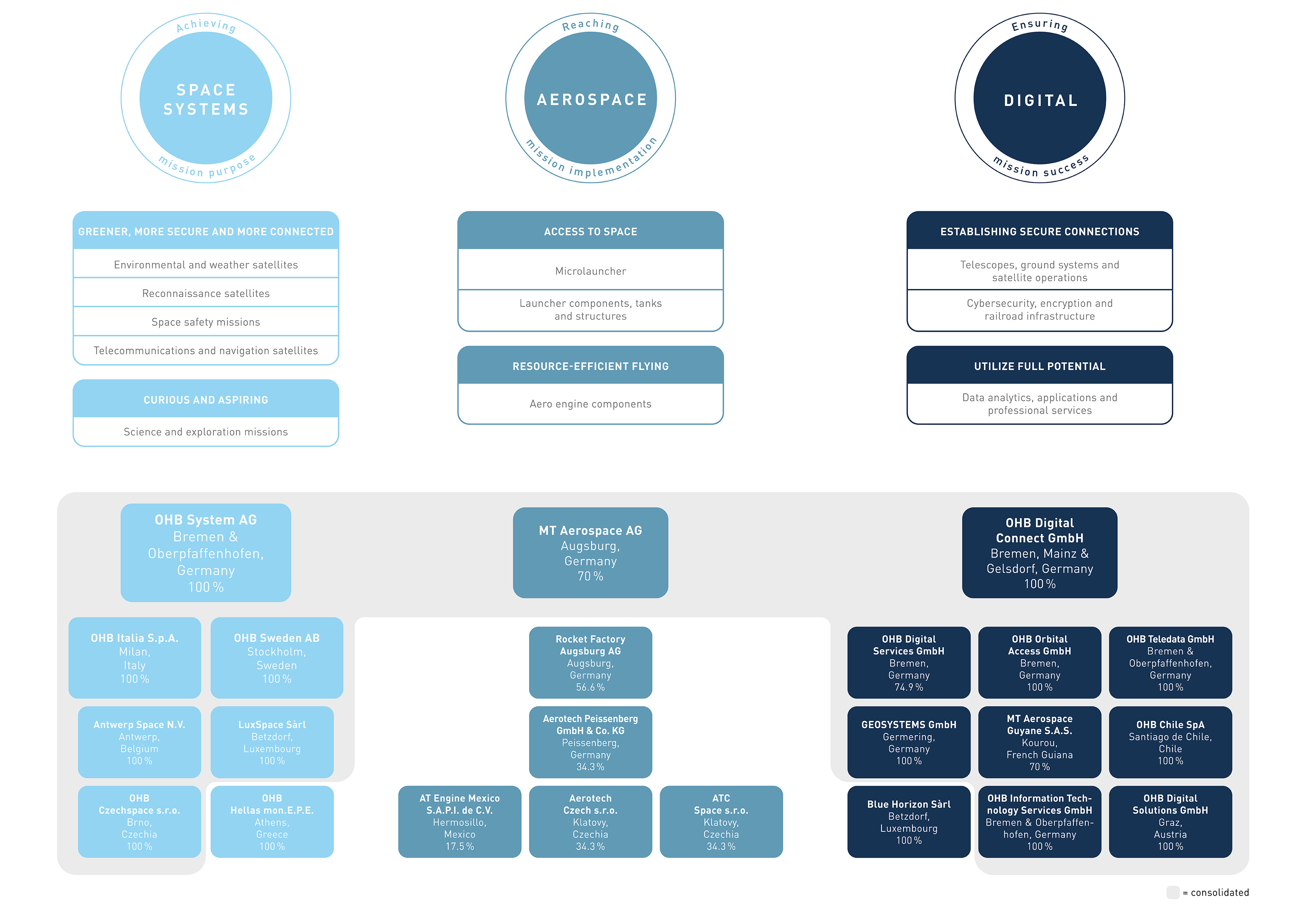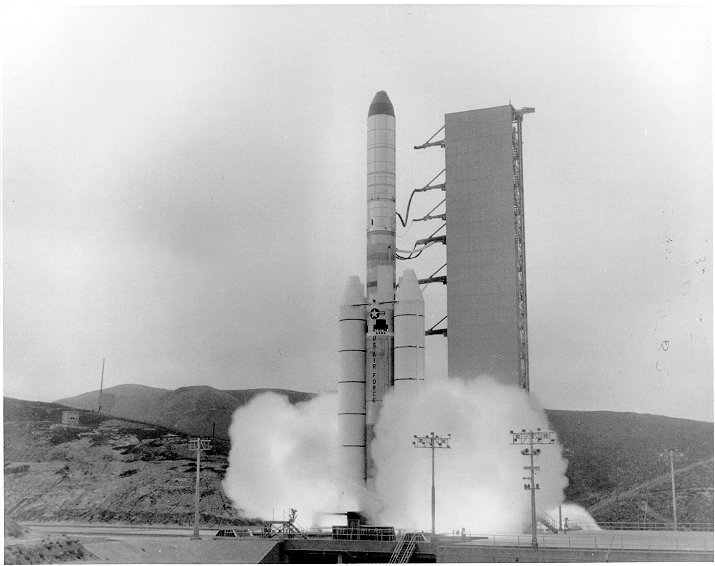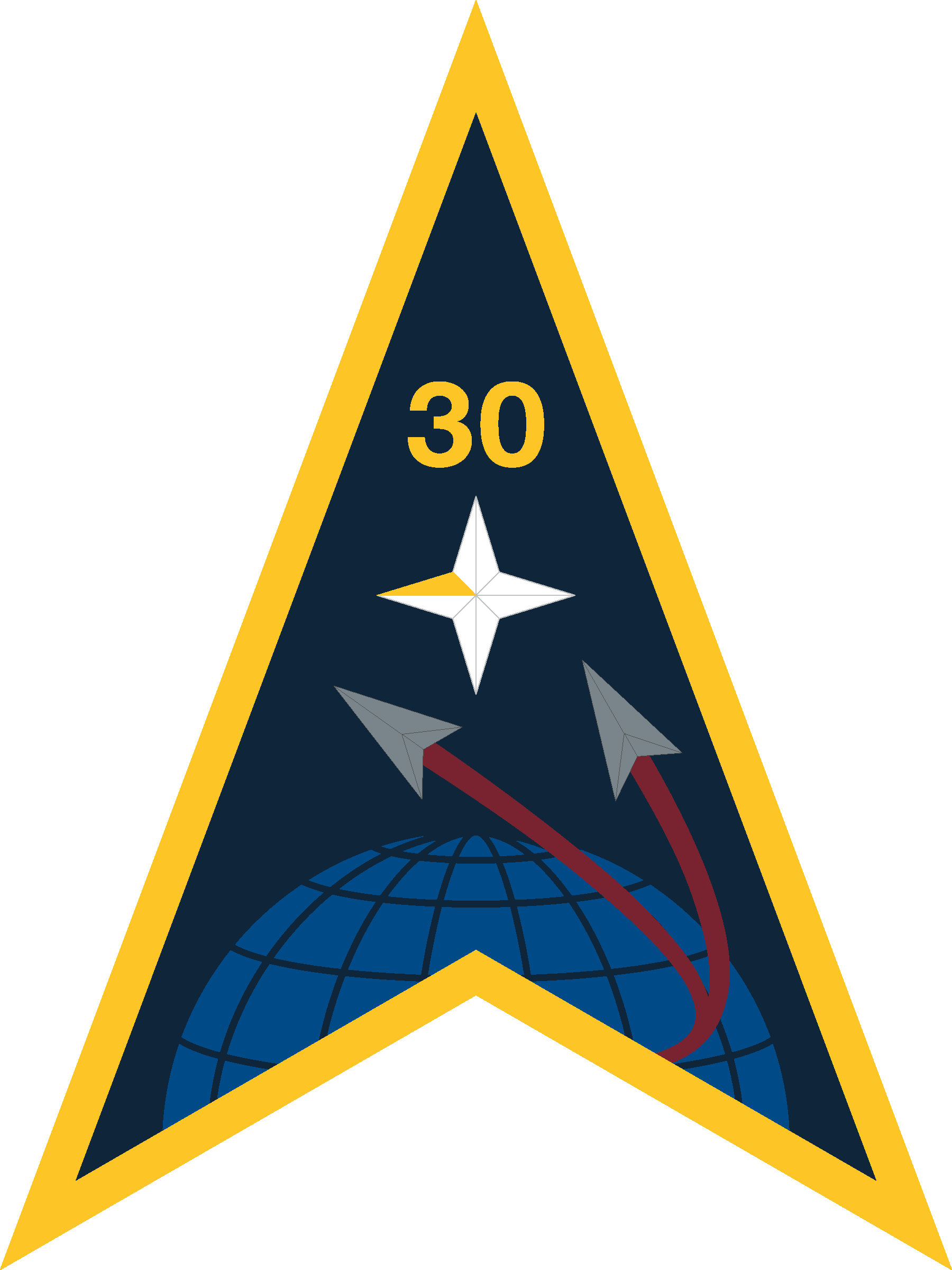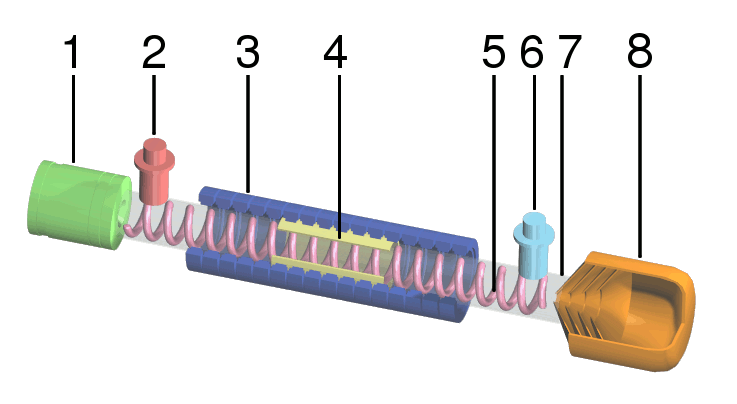|
SAR Lupe
SAR-Lupe is Germany's first reconnaissance satellite system and is used for military purposes. SAR is an abbreviation for synthetic-aperture radar, and "Lupe" is German for magnifying glass. The SAR-Lupe program consists of five identical (770 kg) satellites, developed by the German aeronautics company OHB-System, which are controlled by a ground stationSAR-Lupe ground station: Zentrum für Nachrichtenwesen der Bundeswehr (ZNBw), Max-Planck-Str. 17, 53501 Gelsdorf . responsible for controlling the system and analysing the retrieved data. A large data archive of images will be kept in a former Cold War bunker belonging to the (Strategic Reconnaissance Command) of the Bundeswehr. The total price of the satellites was over 250 million Euro. Specifications SAR-Lupe's "high-resolution" images can be acquired day or night through all weather conditions. The satellites are able to provide up-to-date imagery from almost all regions of the world. The first satellite was lau ... [...More Info...] [...Related Items...] OR: [Wikipedia] [Google] [Baidu] |
France
France, officially the French Republic, is a country located primarily in Western Europe. Overseas France, Its overseas regions and territories include French Guiana in South America, Saint Pierre and Miquelon in the Atlantic Ocean#North Atlantic, North Atlantic, the French West Indies, and List of islands of France, many islands in Oceania and the Indian Ocean, giving it Exclusive economic zone of France, one of the largest discontiguous exclusive economic zones in the world. Metropolitan France shares borders with Belgium and Luxembourg to the north; Germany to the northeast; Switzerland to the east; Italy and Monaco to the southeast; Andorra and Spain to the south; and a maritime border with the United Kingdom to the northwest. Its metropolitan area extends from the Rhine to the Atlantic Ocean and from the Mediterranean Sea to the English Channel and the North Sea. Its Regions of France, eighteen integral regions—five of which are overseas—span a combined area of and hav ... [...More Info...] [...Related Items...] OR: [Wikipedia] [Google] [Baidu] |
SAOCOM
SAOCOM (Satélite Argentino de Observación COn Microondas, Spanish for Argentine Microwaves Observation Satellite) is an Earth observation satellite constellation of Argentina's space agency CONAE. Two satellites are already orbiting the Earth in a Sun-synchronous orbit. The second one was launched on 30 August 2020. CONAE contracted the company INVAP as main contractor for the project. Configuration The two satellites, SAOCOM 1A and SAOCOM 1B, both are equipped with an L-band (about 1.275 GHz) full polarimetric synthetic-aperture radar (SAR) to help predict and monitor the mitigation of natural disasters. Each satellite has a mass of . History Due to delays in the development of satellites, both launches were postponed for 2012 and 2013. Further delays pushed the launch dates back tentatively towards 2014 and 2015. By 2016, SAOCOM 1A was scheduled for launch in December 2016, and SAOCOM 1B in December 2017. In April 2016, the launch dates for SAOCOM 1A and SAOCO ... [...More Info...] [...Related Items...] OR: [Wikipedia] [Google] [Baidu] |
Ars Technica
''Ars Technica'' is a website covering news and opinions in technology, science, politics, and society, created by Ken Fisher and Jon Stokes in 1998. It publishes news, reviews, and guides on issues such as computer hardware and software, science, technology policy, and video games. ''Ars Technica'' was privately owned until May 2008, when it was sold to Condé Nast Digital, the online division of Condé Nast Publications. Condé Nast purchased the site, along with two others, for $25 million and added it to the company's ''Wired'' Digital group, which also includes '' Wired'' and, formerly, Reddit. The staff mostly works from home and has offices in Boston, Chicago, London, New York City, and San Francisco. The operations of ''Ars Technica'' are funded primarily by advertising, and it has offered a paid subscription service since 2001. History Ken Fisher, who serves as the website's current editor-in-chief, and Jon Stokes created ''Ars Technica'' in 1998. Its purpose was t ... [...More Info...] [...Related Items...] OR: [Wikipedia] [Google] [Baidu] |
OHB SE
OHB SE, headquartered in Bremen, is a European space and technology group specializing in the development and implementation of complete space systems, the production of components for various launcher programs as well as the operation of satellite systems and the processing and provision of the data collected. The company employs over 3,000 people at 15 locations in ten countries, most of them in Europe. Since 2023 US Kohlberg Kravis Roberts holds shares on OHB. The majority owner is the family around the founders Manfred Fuchs, Fuchs. Corporate history In 1981, Christa Fuchs took over Otto Hydraulik Bremen GmbH. Founded in 1958, the Bremen-Hemelingen, Hemelingen-based company had five employees at the time and was engaged in the construction and repair of electrical and hydraulic ship systems for the German Federal Armed Forces. Together with Entwicklungsring Nord, MBB-ERNO as project leader and the Sarstedt shipyard, OHB won the contract for the construction of the MPOSS ' ... [...More Info...] [...Related Items...] OR: [Wikipedia] [Google] [Baidu] |
Phased Array
In antenna (radio), antenna theory, a phased array usually means an electronically scanned array, a computer-controlled Antenna array, array of antennas which creates a radio beam, beam of radio waves that can be electronically steered to point in different directions without moving the antennas. In a phased array, the power from the transmitter is fed to the radiating elements through devices called ''phase shifters'', controlled by a computer system, which can alter the phase or signal delay electronically, thus steering the beam of radio waves to a different direction. Since the size of an antenna array must extend many wavelengths to achieve the high gain needed for narrow beamwidth, phased arrays are mainly practical at the high frequency end of the radio spectrum, in the ultrahigh frequency, UHF and microwave bands, in which the operating wavelengths are conveniently small. Phased arrays were originally invented for use in military radar systems, to detect fast moving pla ... [...More Info...] [...Related Items...] OR: [Wikipedia] [Google] [Baidu] |
SLC-4E
Space Launch Complex 4 (SLC-4) is a launch and landing site at Vandenberg Space Force Base, California, U.S. It has two pads, both of which are used by SpaceX for Falcon 9, one for launch operations, and the other as Landing Zone 4 (LZ-4) for SpaceX landings. The complex was previously used by Atlas and Titan rockets between 1963 and 2005. It consisted of two launch pads: Space Launch Complex 4 West (SLC-4W, formerly PALC-2-3) and Space Launch Complex 4 East (SLC-4E, formerly PALC-2-4). Both pads were built for use by Atlas-Agena rockets, but were later rebuilt to handle Titan rockets. The designation SLC-4 was applied at the time of the conversion to launch Titan launch vehicles. Both pads at Space Launch Complex 4 are currently leased by SpaceX. SLC-4E is leased as a launch site for the Falcon 9 rocket, which first flew from Vandenberg on 29 September 2013, following a 24-month refurbishment program which had started in early 2011. SpaceX began a five-year lease of Launch C ... [...More Info...] [...Related Items...] OR: [Wikipedia] [Google] [Baidu] |
VSFB
Vandenberg Space Force Base , previously Vandenberg Air Force Base, is a United States Space Force Base in Santa Barbara County, California. Established in 1941, Vandenberg Space Force Base is a space launch base, launching spacecraft from the Western Range, and also performs missile testing. The United States Space Force's Space Launch Delta 30 serves as the host delta for the base, equivalent to an Air Force air base wing. In addition to its military space launch mission, Vandenberg Space Force Base also hosts space launches for civil and commercial space entities, such as NASA and SpaceX. History United States Army Camp Cooke (1941–1953) In 1941, just before the United States entered World War II, the United States Army embarked on an initiative to acquire lands in the United States to be used to train infantry and armored forces. These areas needed to be of a varied nature to ensure relevant training. In March 1941, the Army identified approximately of open ran ... [...More Info...] [...Related Items...] OR: [Wikipedia] [Google] [Baidu] |
Falcon 9 Block 5
Falcon 9 Block 5 is a Reusable launch system#Partial reusable launch systems, partially reusable, human-rating certification, human-rated, two-stage-to-orbit, medium-lift launch vehicle designed and manufactured in the United States by SpaceX. It is the fifth major version of the Falcon 9 family and the third version of the Falcon 9 Full Thrust. It is powered by SpaceX Merlin, Merlin 1D engines burning rocket-grade kerosene (RP-1) and liquid oxygen (LOX). The main changes from Block 3 (the original Falcon 9 Full Thrust) to Block 5 are higher-thrust engines and improvements to the landing legs along with numerous other small changes to streamline recovery and re-use of List of Falcon 9 first-stage boosters, first-stage boosters and increase the production rate. Each Block 5 booster is designed to fly ten times with only minor maintenance between launches and potentially up to 100 times with periodic refurbishment. In 2018, Block 5 succeeded the transitional Bl ... [...More Info...] [...Related Items...] OR: [Wikipedia] [Google] [Baidu] |
Cosmos-3M
The Kosmos-3M ( meaning "''Cosmos''", GRAU index 11K65M) was a Russian space launch vehicle, member of the Kosmos rocket family. It was a liquid-fueled two-stage launch vehicle, first launched in 1967 and with over 420 successful launches to its name. The Kosmos-3M used UDMH fuel and AK27I oxidizer (red fuming nitric acid) to lift roughly of payload into orbit. It differed from the earlier Kosmos-3 in its finer control of the second-stage burn, allowing operators to tune the thrust and even channel it through nozzles that helped orient the rocket for the launching of multiple satellites at one time. PO Polyot manufactured these launch vehicles in the Russian city of Omsk for decades. It was originally scheduled to be retired from service in 2011; however, in April 2010 the Commander of the Russian Space Forces confirmed that it would be retired by the end of 2010. One further launch, with Kanopus-ST, was planned; however, this was cancelled in late 2012 as the launch vehic ... [...More Info...] [...Related Items...] OR: [Wikipedia] [Google] [Baidu] |
Launch Vehicle
A launch vehicle is typically a rocket-powered vehicle designed to carry a payload (a crewed spacecraft or satellites) from Earth's surface or lower atmosphere to outer space. The most common form is the ballistic missile-shaped multistage rocket, but the term is more general and also encompasses vehicles like the Space Shuttle. Most launch vehicles operate from a launch pad, supported by a missile launch control center, launch control center and systems such as vehicle assembly and fueling. Launch vehicles are engineered with advanced aerodynamics and technologies, which contribute to high operating costs. An orbital spaceflight, orbital launch vehicle must lift its payload at least to the boundary of space, approximately and accelerate it to a horizontal velocity of at least . Suborbital spaceflight, Suborbital vehicles launch their payloads to lower velocity or are launched at elevation angles greater than horizontal. Practical orbital launch vehicles use chemical prope ... [...More Info...] [...Related Items...] OR: [Wikipedia] [Google] [Baidu] |
Travelling-wave Tube
A traveling-wave tube (TWT, pronounced "twit") or traveling-wave tube amplifier (TWTA, pronounced "tweeta") is a specialized vacuum tube that is used in electronics to amplify radio frequency (RF) signals in the microwave range. It was invented by Andrei Haeff around 1933 as a graduate student at Caltech, and its present form was invented by Rudolf Kompfner in 1942–43. The TWT belongs to a category of "linear beam" tubes, such as the klystron, in which the radio wave is amplified by absorbing power from a beam of electrons as it passes down the tube. Although there are various types of TWT, two major categories are: *''Helix TWT'' - in which the radio waves interact with the electron beam while traveling down a wire helix which surrounds the beam. These have wide bandwidth, but output power is limited to a few hundred watts. *''Coupled cavity TWT'' - in which the radio wave interacts with the beam in a series of cavity resonators through which the beam passes. These function ... [...More Info...] [...Related Items...] OR: [Wikipedia] [Google] [Baidu] |

